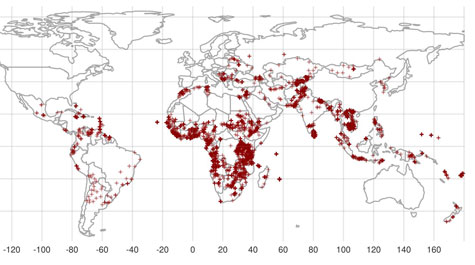AidData study looks at impact of Chinese infrastructure projects
In a new AidData Working Paper released Sept. 11, a team of economists and political scientists from William & Mary, Leibniz University Hannover, Heidelberg University, Helmut Schmidt University Hamburg and Harvard University leverage a new geolocated dataset of Chinese Government-financed projects worldwide to evaluate how these investments alter the geographic distribution of economic activity within provinces and districts in low- and middle-income countries.
The findings from the study are encouraging: Chinese development projects — in particular, “connective infrastructure” projects like roads and bridges — are found to create a more equal distribution of economic activity within the provinces and districts where they were located. The study also measures the impact of Chinese development projects on economic inequality between provinces and districts, and here too the results provide grounds for optimism: Chinese Government-financed projects appear to reduce, rather than widen, economic disparities between regions.
To consistently measure economic inequality from year to year in more than 32,000 subnational localities around the world, the researchers calculated a Gini coefficient using annual data on the geographical dispersion of nighttime light. The Gini coefficient is a measure of inequality that varies from 0 to 1. A value of 1 represents perfect economic inequality (for example, a province in which a single 1 km x 1 km grid cell within that subnational jurisdiction harbors all economic activity) and 0 represents perfect economic equality (a province in which every 1 km x 1 km grid cell within that subnational jurisdiction has the same level of economic activity).
Among the numerous news outlets that have reported on this story, the Associated Press disseminated a report picked up by The Washington Post, CNBC, and The Virginian-Pilot among many others. The South China Morning Post wrote its own story.
This analysis was made possible by a far-reaching effort at AidData to assign precise geographic coordinates to AidData’s first global dataset of Chinese development projects, released last October. The result of thousands of hours of geocoding by dozens of research assistants is a first-of-its-kind dataset that pinpoints the locations of 3,485 Chinese development projects worth USD $273.6 billion that were implemented in 6,184 locations in 138 countries over a fifteen-year period (2000-2014).
















